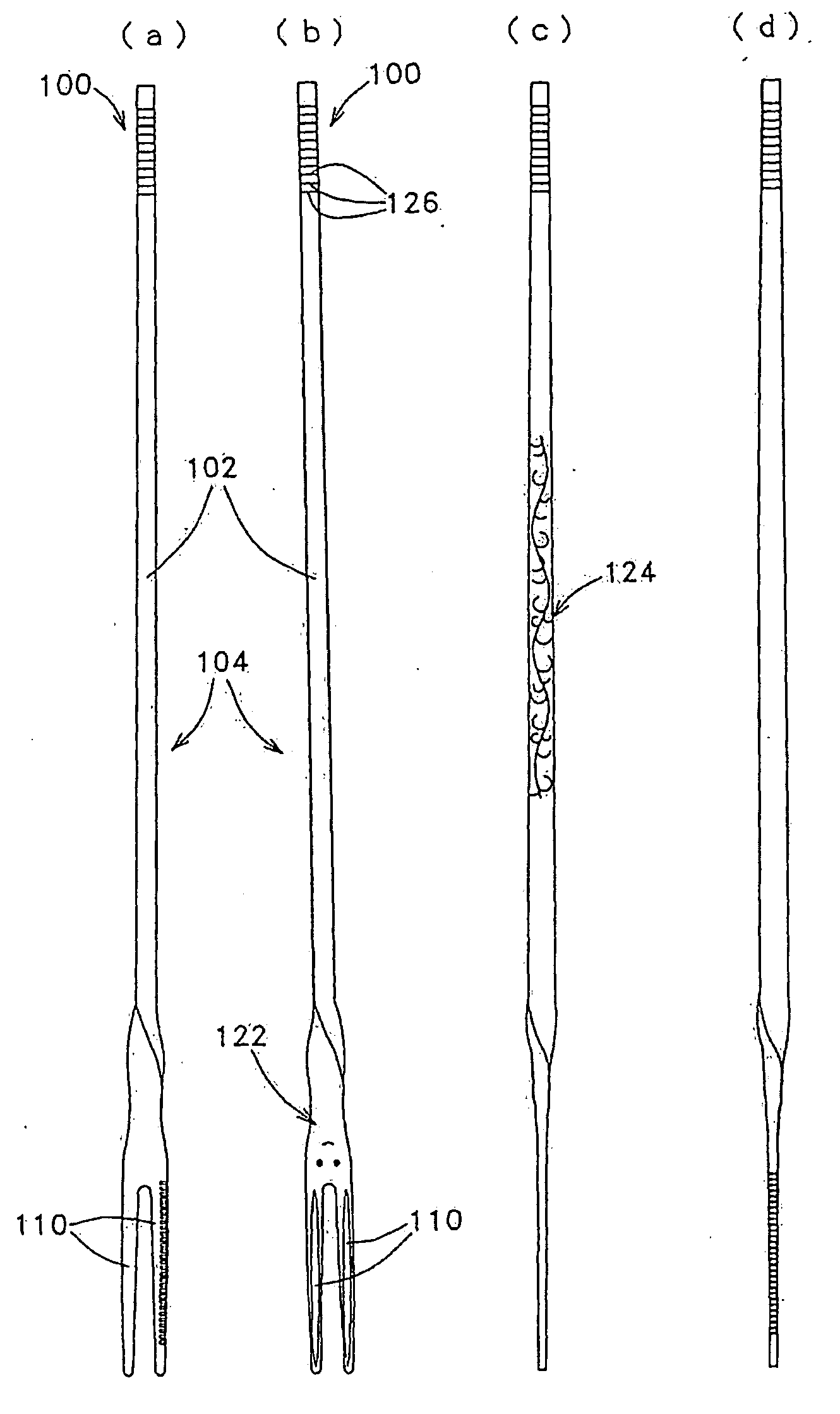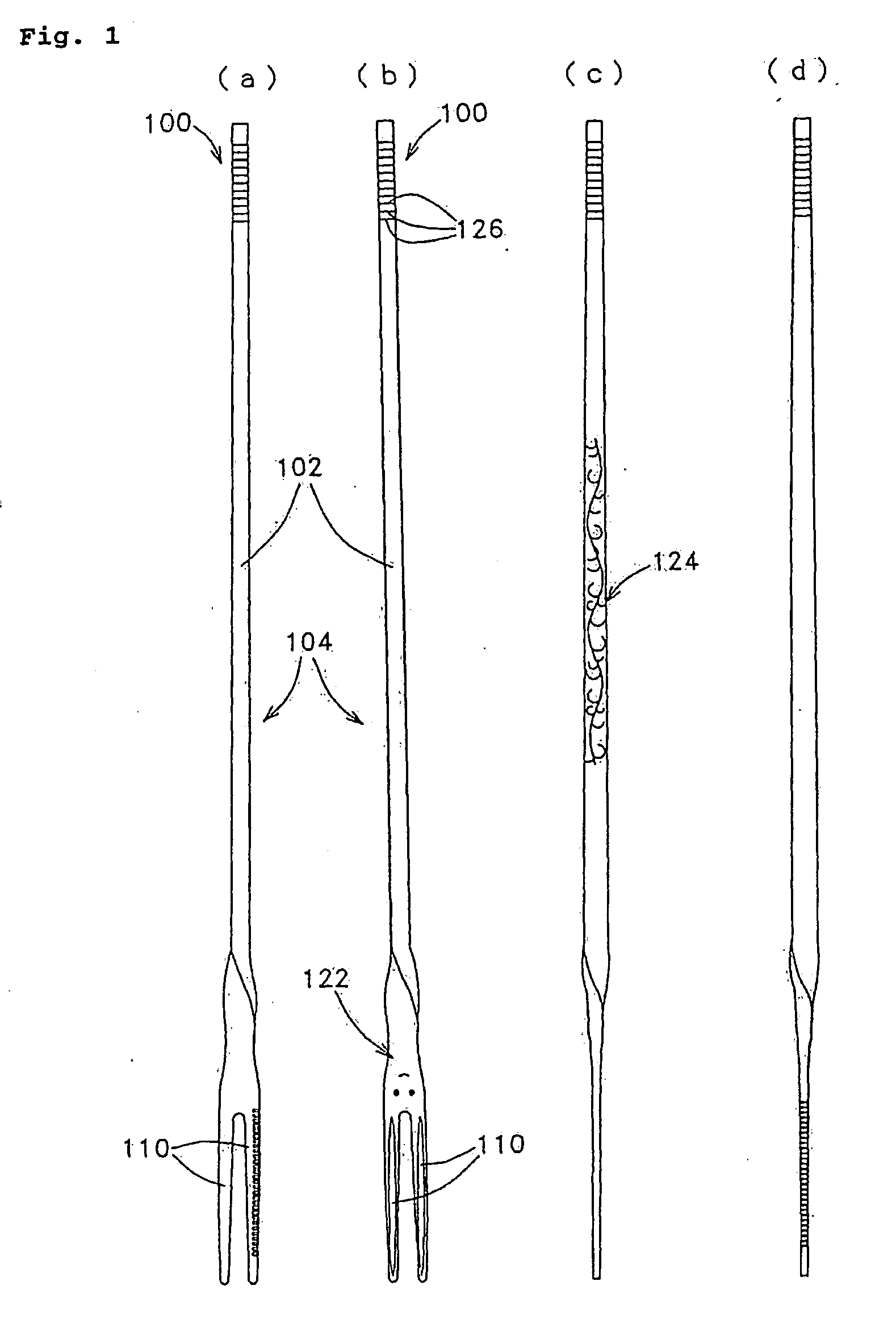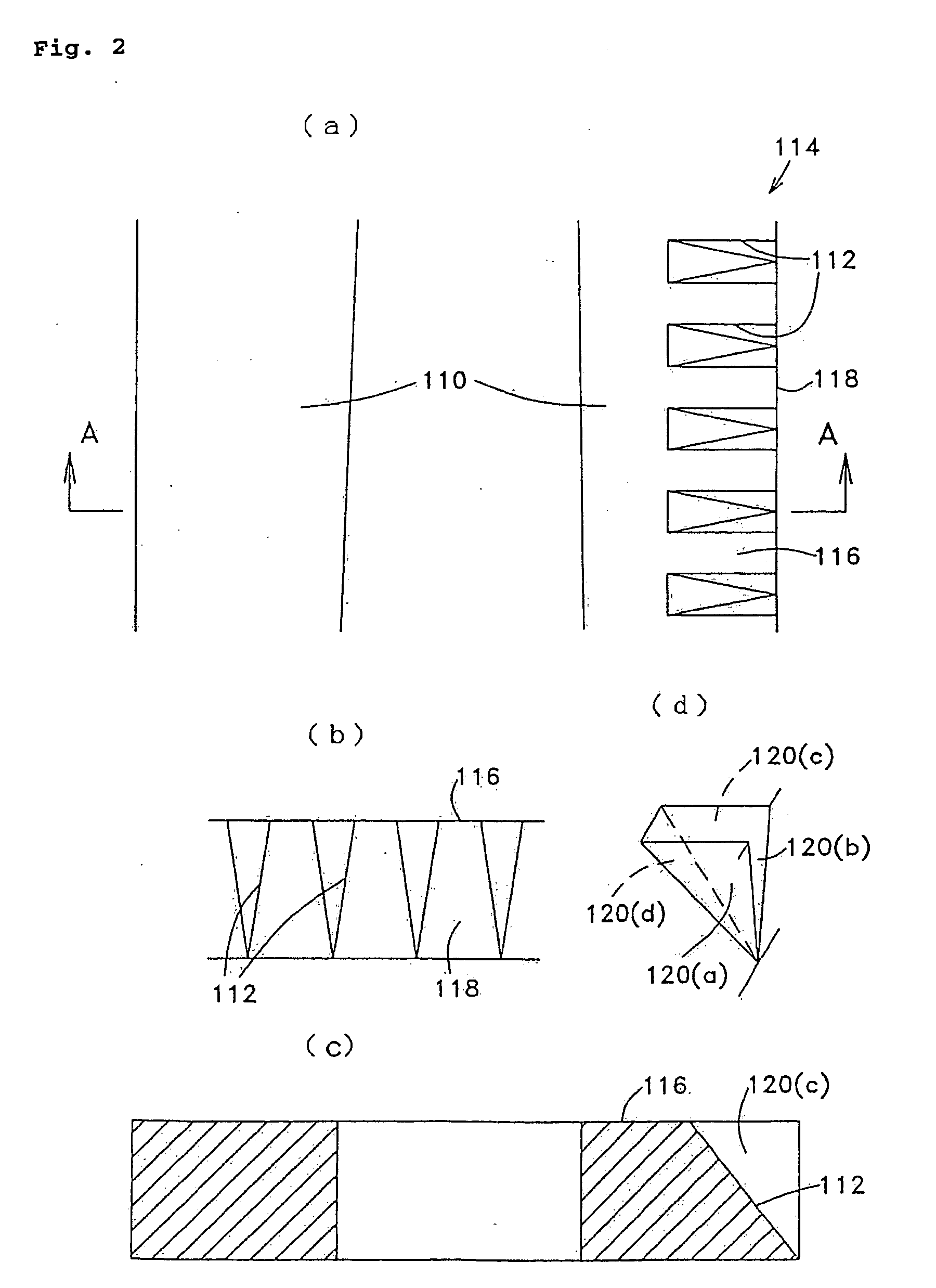Eating tool
a technology of eating tools and chopsticks, which is applied in the field of eating tools, can solve the problems of increasing the consumption of disposable chopsticks, increasing the number of disposable chopsticks, so as to prevent the destruction of forests, reduce the use of disposable chopsticks, and prevent hand slippage. the effect of slippery hands
- Summary
- Abstract
- Description
- Claims
- Application Information
AI Technical Summary
Benefits of technology
Problems solved by technology
Method used
Image
Examples
Embodiment Construction
[0022]A preferred embodiment of an eating tool according to the present invention will now be described in detail on the basis of the accompanying drawing. In FIGS. 1 (a) and 1 (b), reference numeral 100 is an eating tool of the present invention. The eating tool 100 is mainly used at household or a restaurant. Although the material of the eating tool 100 is not particularly limited, stainless-steel can contribute to cost reduction because stainless eating tools can be repeatedly used by being washed, which results in contribution to cost reduction. The eating tool may be antibacterial plated for good sanitation. The eating tool 100 may be made of ferritic stainless-steel and may be configured not to make any noises by carrying the eating tool 100 while putting the eating tool 100 into a plastic case with a magnet attaching the eating tool 100 into the case. In the case of austenite stainless-steel, the thickness of the material covered with a transparent oxide film is varied in uni...
PUM
 Login to View More
Login to View More Abstract
Description
Claims
Application Information
 Login to View More
Login to View More - R&D
- Intellectual Property
- Life Sciences
- Materials
- Tech Scout
- Unparalleled Data Quality
- Higher Quality Content
- 60% Fewer Hallucinations
Browse by: Latest US Patents, China's latest patents, Technical Efficacy Thesaurus, Application Domain, Technology Topic, Popular Technical Reports.
© 2025 PatSnap. All rights reserved.Legal|Privacy policy|Modern Slavery Act Transparency Statement|Sitemap|About US| Contact US: help@patsnap.com



